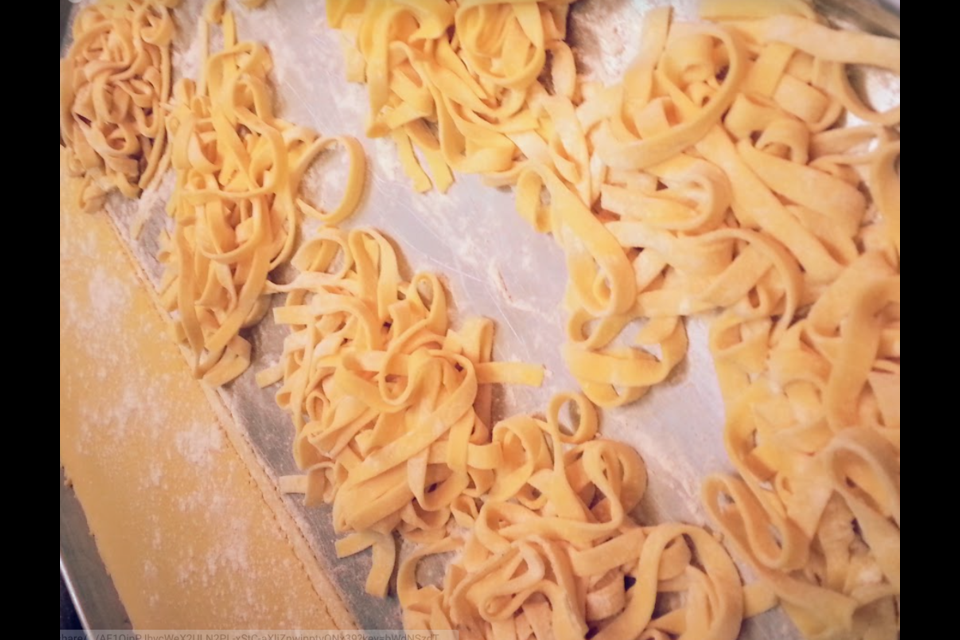I honestly do not know anyone that does not like pasta. Of course, people who are watching carbs or that eat gluten-free may avoid it, but do you know anyone who flat-out does not like pasta?
Pasta must be one of the simplest, quickest dishes to make, and it is extremely affordable. It is no wonder it is such a popular food.
So where did it come from? Is fresh pasta better than dried pasta?
Although the Italians are known for their pasta, they did not invent it.
Pasta, which derives from “paste” or dough, has an exceptionally long history and there are many versions of just how it arrived in Italy.
Contrary to widespread belief, Marco Polo did not bring pasta back to Italy in the 13th century. There is proof that pasta was already in Italy much earlier than that.
It is said to have originated in Asia and travelled to Italy with the Arab traders via the Silk Road in the eighth and ninth centuries. It arrived first in Sicily and then made its way to mainland Italy.
It became popular in the post medieval period and has become a staple in Italy since then.
As producers of durum wheat, Italy was a natural place for pasta production to grow and thrive.
Fast forward to 2022 and there are over 300 different varieties of pasta, and the average Italian consumes 23.1 kg of pasta per year. That's a lot of pasta!
The favourite dried pasta shapes vary from Italy to North America.
Italians prefer “pasta corta” or short pasta, like pene, fusilli, rigatoni or farfalle. They also prefer their pasta to be “rigate”’, or with lines, as opposed to “lisca”, smooth. The indented lines on pasta rigate help to hold the sauce better and have a different mouth feel. North Americans, on the other hand, prefer “pasta lunga” or long pasta, such as spaghetti, linguini or fettuccini.
So, what’s the difference between dried pasta (pasta secca) and fresh pasta (pasta fresca)?
Is one better than the other?
In the early days, Italians made fresh pasta regularly, even daily. In the south of Italy where high protein durum wheat is grown, it was simply made with durum flour and water.
In the Northern regions, egg pasta was more common. It contains flour, eggs and water.
As Italy became more industrialized and modern families had less time to be in the kitchen, commercially produced, dried pasta was more convenient. Fresh pasta became something that was saved for special occasions or Sunday Pranzo. Unless there was a stay-at-home parent or grandparent in the household it became less popular to make at home regularly.
Italians perfected the industrialized, dried pasta, manufacturing process, and therefore it is not an inferior product to the fresh version. In fact, the term “al dente” or “to the tooth” arose during the 19th century. This simply means that pasta is cooked to a texture that still has a slight bite to it or firm texture, without being undercooked. Fresh pasta cannot achieve this texture, as it is too soft to begin with.
Personally, pasta is my go-to for a quick meal and to get it on the table quickly requires that my pantry be stocked with excellent quality, dried pasta. There are numerous varieties within that genre as well. There are machine-made varieties or handmade, artisanal varieties. The cooking time can vary from a few minutes to up to 15 or more even.
Fresh pasta is not better. It is simply different from dried pasta. Some of the shapes can be similar, but the texture is different, and the time required to make it is also different.
So, I suppose it depends on personal preference and simply how much time you have to make dinner!
In Guelph, with a large Italian population, we can source lots of varieties of pasta.
Market Fresh, Angelinos and Italia Salami Co. have some of the larger selections of dry pasta. Fresh pasta can also be found at Market Fresh, Angelinos and National Pasta.



